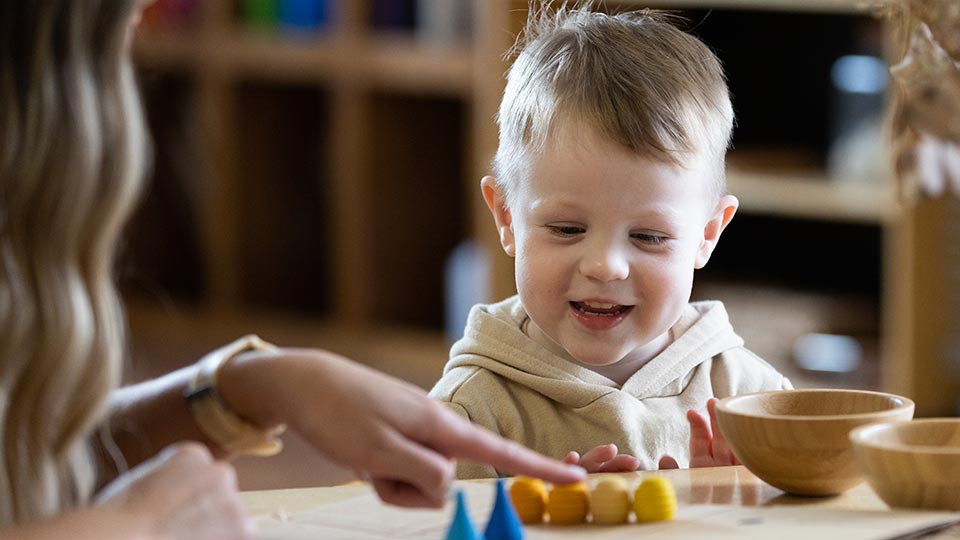
Loose parts play allows children to turn everyday items into anything their imagination creates - from wooden blocks, leaves, acorns, and cotton wool - endless options!
As babies and toddlers start to explore, they’ll often use all of their senses (especially touch and taste) to gather and learn information about the many objects they find. This stage of development is completely normal and signals their growing interest in the world around them.
In 1971, architect Simon Nicholson developed the theory of loose parts. This term describes all of those open-ended materials that encourage children's creativity and exploration.
What is Loose Parts Play?
Loose parts play is exactly what it sounds like. Children love to touch and move around loose objects and materials during playtime as it allows them to discover something new and to turn everyday items into anything their imagination creates. Loose parts can include an array of items, such as wooden blocks, leaves, acorns, cotton wool, and newspaper — the options are endless!
Children can place these items in a line, build them up high, take them apart and put them back together — there’s no right or wrong way to engage in loose parts play. Parents and early childhood educators should always support and encourage a child’s decision to change the shape or use of a loose item. The important part is allowing children to expand their play skills which this activity does in abundance.
What are the benefits of Loose Parts Play?
While this activity may look like a few random items, don’t underestimate the power of loose parts play. Even when young child looks like they’re just playing, underneath, their brains are working hard to solve puzzles and work through challenges.
The appeal of loose parts play to children creates a real sense of enthusiasm and motivation to learn outside where they can develop their experience, knowledge and judgement skills. Importantly, skills and ideas are transferred between the child care centre and the home, which creates vital learning experience links.
There are many other benefits of children playing with loose parts, including more creative and imaginative play opportunities and the experience of playing cooperatively and socialising. Additionally, informal play with loose parts can work hand-in-hand with the curriculum. Best of all, loose-parts play is accessible to every single child.
Loose Parts Maths
How old are you? When is your bedtime? Who had a bigger piece of birthday cake? Mathematics starts early in everyday situations covering numbers, times of the day and creating patterns. Loose-part play is a fantastic method to develop your child’s math skills naturally.
Tip: Give your child a ‘maths bag’ and ask them to collect small items around the house and garden. It could be small toys, rocks, shells, bottle lids — anything that catches their eye. Now ask them to line them up. They can organise, count and split them into matching groups from here.
Loose Parts Information For Parents
At Lifelong Learning Centres, we continually encourage children to develop problem-solving skills through play-based learning in their daily routines. As ‘real-life’ items and materials enable children to connect to their family interests, loose parts play should also be encouraged at home. For example, does a parent enjoy fishing? A stick may become an imaginary fishing rod. Add a bucket and plenty of seashells to this ‘ocean’ environment.
We suggest families create a cupboard or draw at home to collect loose play parts. You and your child can add to it when you come across fun items; this creative activity can be brought out at any time. Please remember any potential safety hazards, such as loose parts, which may come off and cause choking.
Our unique research-based approach to early years education is designed to grow a love of lifelong learning in every child, from babies to school age and beyond. Book a tour at your nearest centre.
